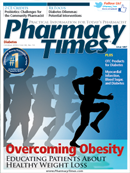Publication
Article
Pharmacy Times
Case Studies
Author(s):
CASE 1
CR, a 44-year-old man, comes to the pharmacy looking for a remedy for his heartburn. He reports that his heartburn has been bothering him for the past few weeks, and he complains of an acidic taste in his mouth and a burning feeling in his throat about twice a week. CR does not complain of any other related symptoms, such as pain when swallowing. CR has a box of omeprazole (Prilosec) in his hand. He asks if it would be the best product to help alleviate his symptoms.
As the pharmacist, how would you respond?
CASE 2
EF is a 30-year-old woman who comes to the pharmacy with dry, demarcated lesions in linear streaks, with some vesicles, on her hands, arms, and face. She says she was gardening yesterday for a few hours and must have touched poison ivy. EF says she tried to hide it with makeup to go to work this morning, but it only made it worse. She exclaims, “I cannot stand the itching anymore.” Upon questioning, you find out that she has had similar lesions before, but they were less extensive and not as bothersome. EF asks if there is pharmacy product that could help. She has no significant medical history and is not taking any prescription or OTC medications.
As the pharmacist, what would you recommend?
ANSWERS
Case 1: Based on his reported symptoms, CR likely suffers from mild/ episodic gastroesophageal reflux disease (GERD), so he is a candidate for self-treatment. OTC proton pump inhibitors (PPIs) such as omeprazole, lansoprazole, and esomeprazole are appropriate for self-treatment of GERD for up to 14 days. However, before you recommend these products, you should educate CR that OTC omeprazole, lansoprazole, and esomeprazole are not intended for immediate relief of heartburn. These drugs have a slow onset but a long duration of action, and CR may have to take one of these drugs for 1 to 4 days before he feels better. CR should be cautioned to speak to his doctor if his symptoms do not resolve after 2 weeks or his heartburn worsens.
Alternatively, CR could try a histamine2 (H2)-receptor antagonist such as ranitidine, cimetidine, famotidine, or nizatidine. H2-receptor antagonists have a different mechanism of action than PPIs and provide relief of heartburn more quickly than PPIs. H2-receptor antagonists can be taken prophylactically before meals to prevent GERD.
CR might also consider taking an antacid, including calcium carbonate, sodium bicarbonate, magnesium hydroxide/aluminum hydroxide, or bismuth subsalicylate. These agents have the fastest onset of action, but they provide only symptomatic relief of heartburn and have the shortest duration of action.
Case 2: Allergic contact dermatitis is an inflammatory skin reaction to a foreign substance, such as urushiol in the sap of the poison ivy plant. Sensitized patients can develop clinical symptoms such as erythema, intense itching, and formation of plaques and vesicles within 4 to 96 hours after exposure to an allergen.
EF appears to have severe contact dermatitis. She is not a candidate for self-treatment because of the facial involvement of her dermatitis and the presence of vesicles and intense itching. If left untreated, allergic contact dermatitis resolves within 1 to 3 weeks; however, it can cause significant discomfort. EF should be referred to her primary care provider to obtain a prescription for an oral corticosteroid, such as prednisone to decrease itching, and perhaps a high-potency topical corticosteroid such as clobetasol propionate 0.05% cream, which is generally not applied to the face. A 21-day course of oral prednisone (starting at 1 mg/kg/day and tapered over 3 weeks) is appropriate and can significantly reduce symptoms, including itching.
EF should be told to keep the area clean and to avoid scratching and using makeup, as they can irritate the skin. In addition, nonpharmacologic treatments, including the application of cold compresses, can be recommended. EF might try using astringents such as aluminum acetate (Burrow’s solution) or calamine to reduce inflammation and promote drying, and healing of the lesions.
function showAnswer() {document.getElementById("answer").style.display = 'block';document.getElementById("link").style.display = 'none';}
Dr. Coleman is professor of pharmacy practice, as well as codirector and methods chief at Hartford Hospital Evidence-Based Practice Center, at the University of Connecticut School of Pharmacy.







